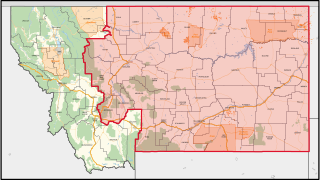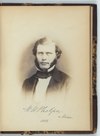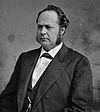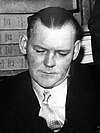
North Dakota's at-large congressional district is the sole congressional district for the state of North Dakota. Based on size, it is the eighth largest congressional district in the nation.
Vermont's 1st congressional district is an obsolete district. Vermont currently has one representative to the United States House of Representatives, elected statewide at-large. Until 1933, however, the state used to have multiple seats spread out into geographic districts. During that time, the first district elected its own representative.
When Arizona became a state in 1912, it was allocated a single seat in the United States House of Representatives, whose member was elected at-large, or statewide.
At different times in its history, Washington elected one or more U.S. representatives at-large statewide.
Illinois elected its United States Representative at-Large on a general ticket upon achieving statehood December 3, 1818. It last elected a US Representative in the Election of 1946. The district has been inactive since.
After the 1880 census, a tenth seat in the United States House of Representatives was added to Virginia's nine districts. For the 48th Congress, that seat was elected at-large statewide. In 1885, Virginia redistricted its seats into ten geographic districts, thereby eliminating the at-large seat.
Michigan's at-large congressional district may refer to a few different occasions when a statewide at-large district was used for elections to the United States House of Representatives from Michigan.
During the first twenty-four Congresses, Connecticut elected all its representatives in Congress from a single multi-member Connecticut at-large congressional district.
Massachusetts's at-large congressional seat is an obsolete construct only used during the 1792–1793 United States House of Representatives elections in Massachusetts. In that election, one of the state's then-14 representatives to the U.S. House was elected statewide at-large. At that time, the U.S. state of Massachusetts included the District of Maine.
The U.S. state of Pennsylvania elected its United States representatives at-large on a general ticket for the first and third United States Congresses. General ticket representation was prohibited by the 1842 Apportionment Bill and subsequent legislation, most recently in 1967.
Mississippi's 3rd congressional district (MS-3) covers central portions of state and stretches from the Louisiana border in the west to the Alabama border in the east.

Montana's 1st congressional district is a congressional district in the United States House of Representatives that was apportioned after the 2020 United States census. The first candidates ran in the 2022 elections for a seat in the 118th United States Congress.
From its admittance as a state in 1890 to 1913, Idaho was represented in the United States House of Representatives by one at-large representative. After the 1910 census Idaho was awarded a second seat starting with the 63rd Congress in 1913. However both seats continued to be elected at-large on a general ticket until the election of 1918. Since that year the state has allocated two districts for its representatives.
From the state's creation August 10, 1821 until the end of the 29th United States Congress, and also for the 73rd Congress (1933–1935), Missouri elected its members of the United States House of Representatives at-large statewide on a general ticket.
Arkansas's at-large congressional district was a congressional district for the United States House of Representatives in Arkansas from 1836 to 1885.
Florida's at-large congressional district may refer to a few different occasions when a statewide at-large district was used for elections to the United States House of Representatives from Florida. The district is obsolete.
On three occasions in New York history, some members of the United States House of Representatives were elected statewide at-large. This was due to an increase of the number of representatives after the previous federal census, and the failure of the State Legislature to re-apportion the congressional districts in time for the next election.

Montana's second congressional district is a congressional district in the United States House of Representatives that was apportioned after the 2020 United States census. The first candidates ran in the 2022 elections for a seat in the 118th United States Congress.
Wisconsin's 10th congressional district is a former congressional district of the United States House of Representatives in Wisconsin. It was created following the 1890 census, and was abolished after the 1970 census.
















